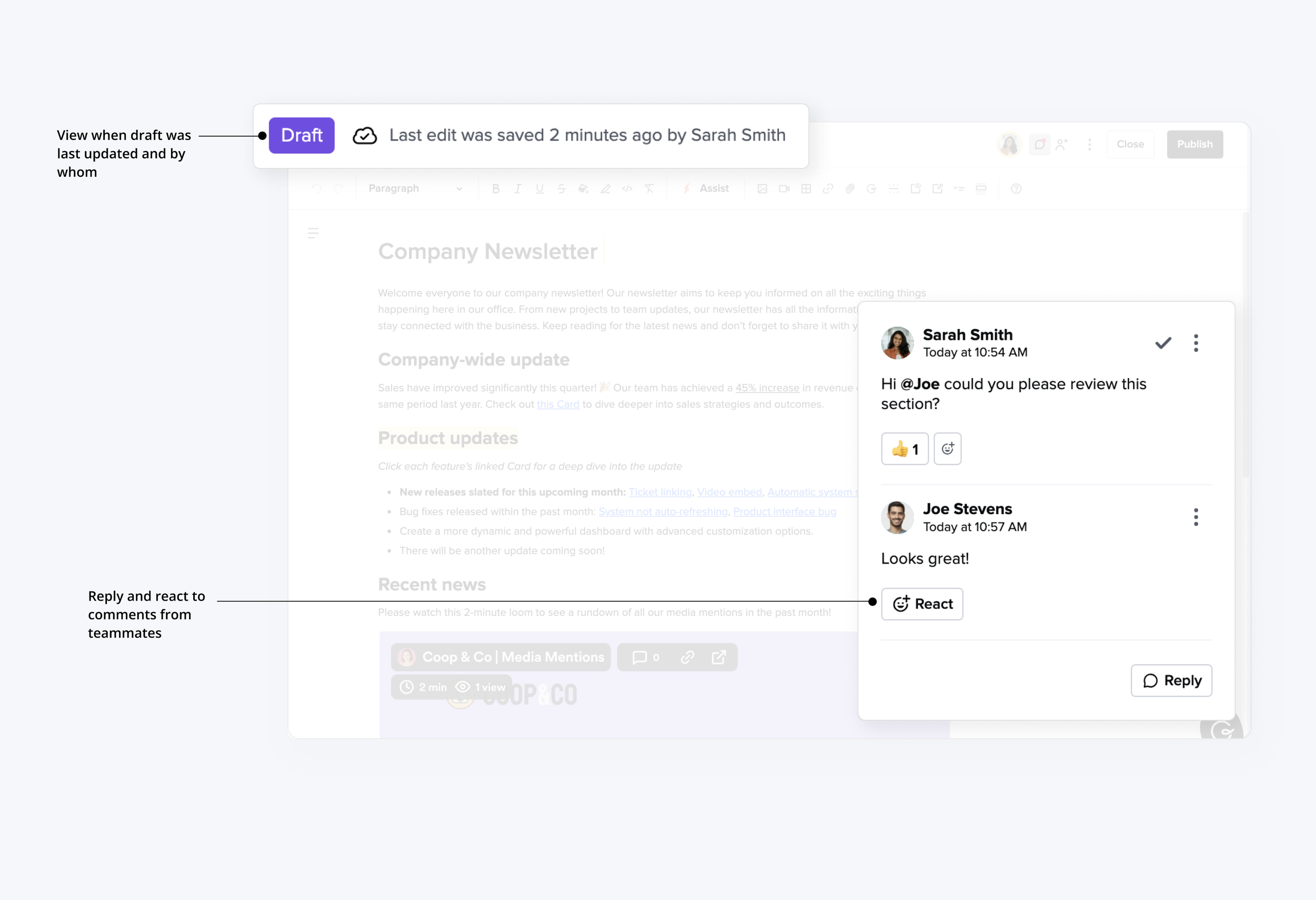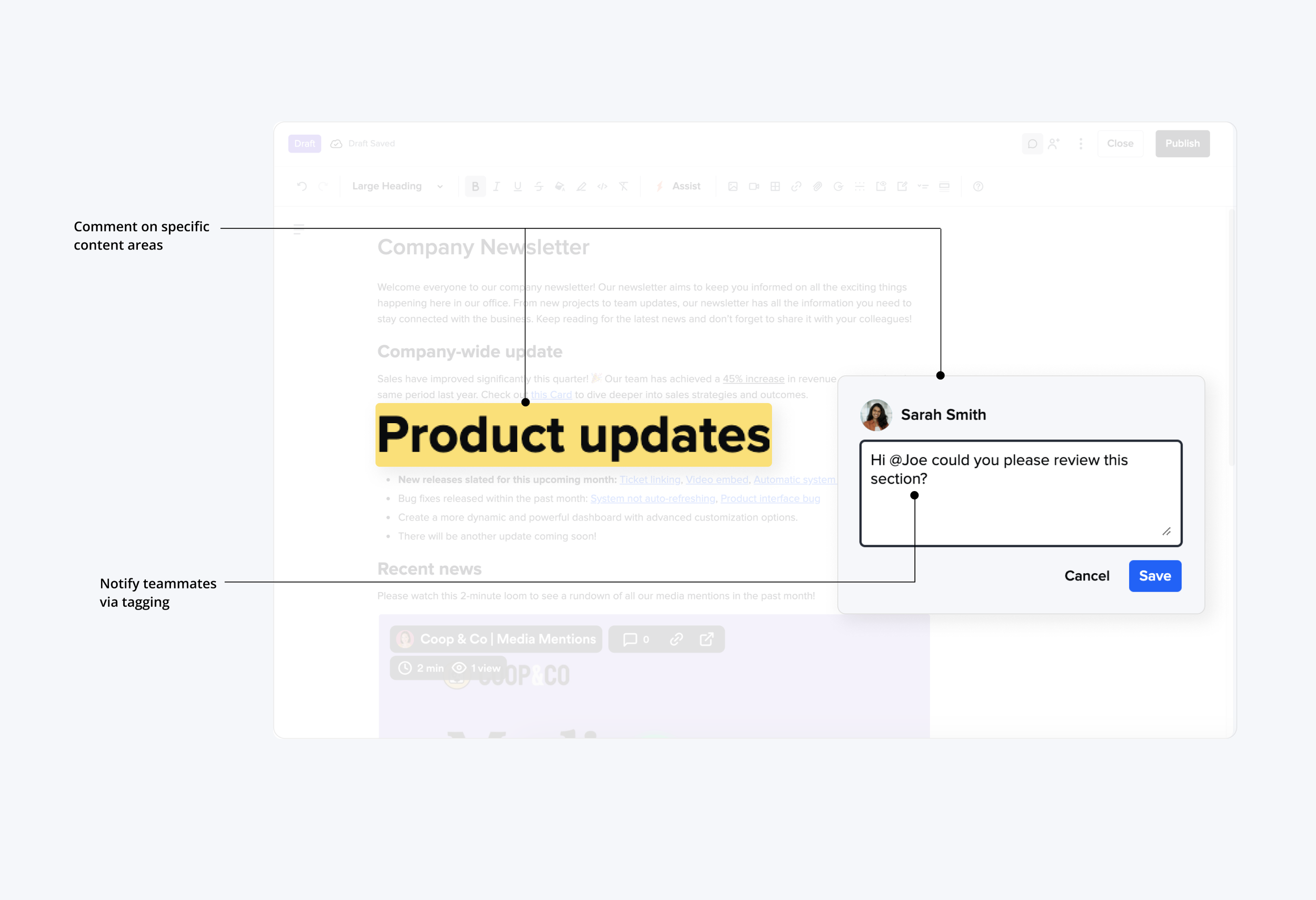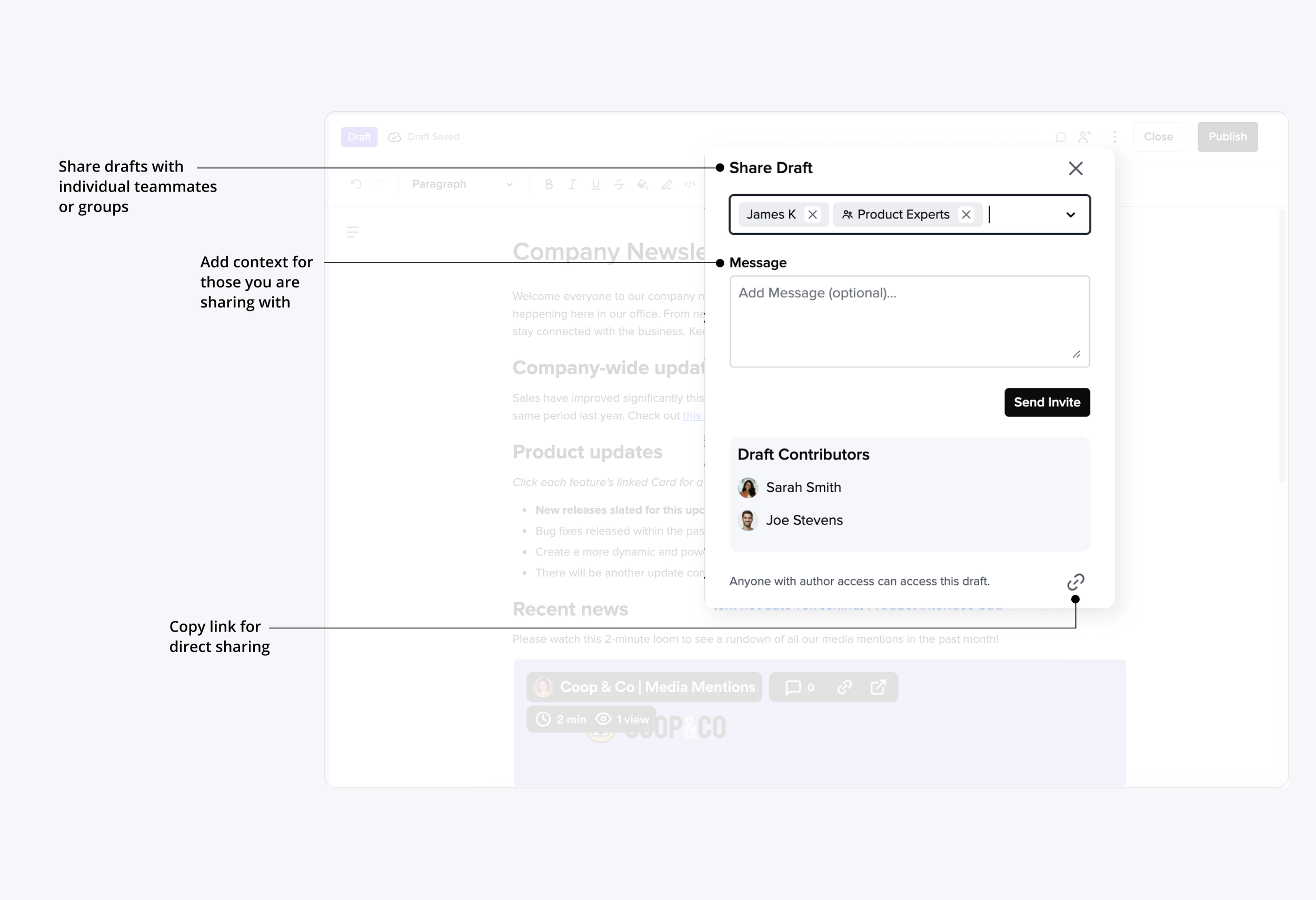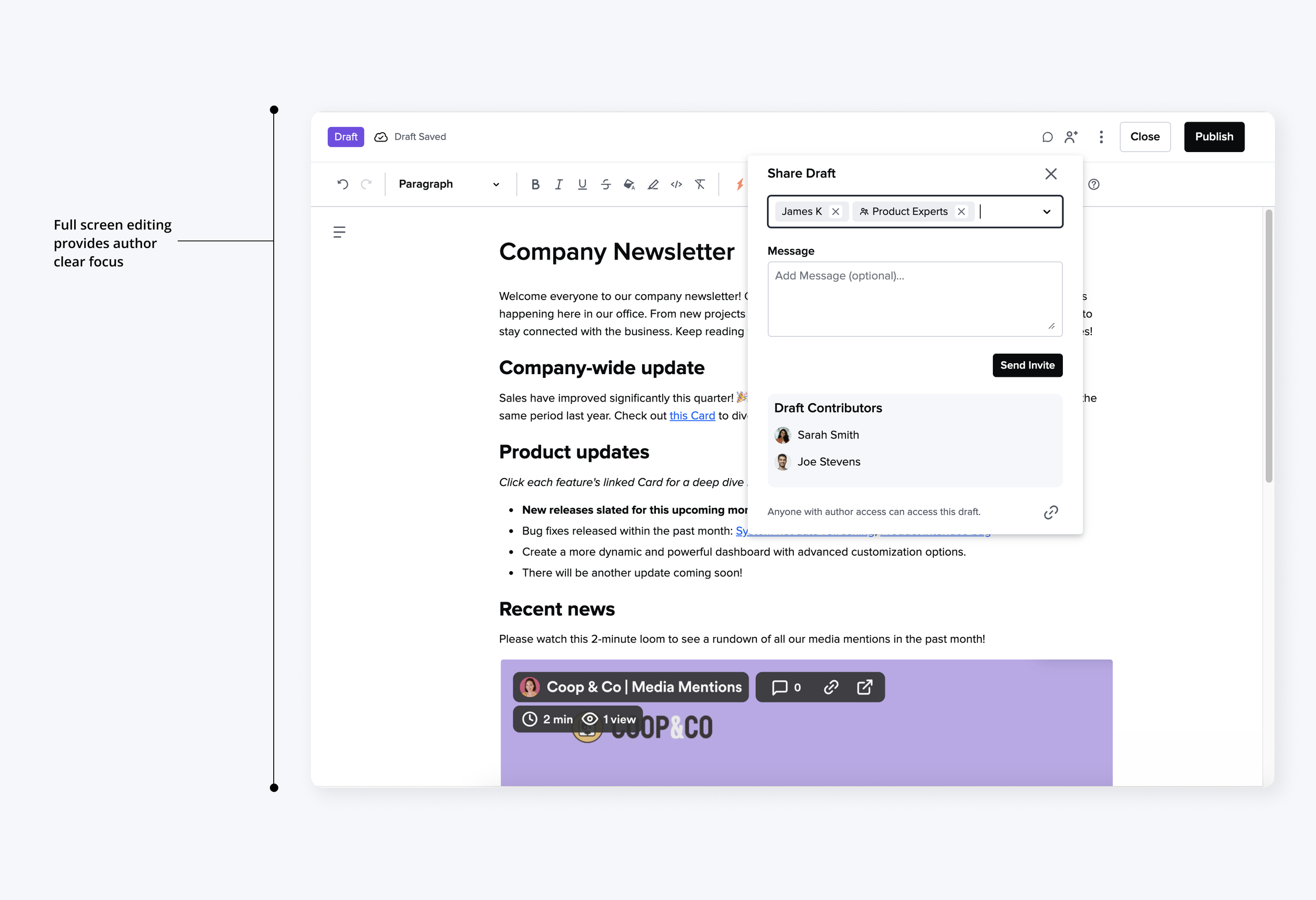Seamless & robust content collaboration
Responsibilities
Research
Product Direction
End-to-end Design
Time Frame
8 months
Team
Kate (me), Product Designer
Laura, Product Manager
Armard, Engineering Manager
Jackie, Front End Engineering Lead
Aaron, Back End Engineering Lead
Eddy, Engineer
Julian, Editor Wizard
Problem: Cumbersome, inefficient content creation 😣
It was clear users need to collaborate on content creation in Guru in order to do their work effectively. Due to this feature lack, we were losing sales deals and customers were churning, resulting in ~$1M lost ARR.
Identifying High-Impact Features for Initial Focus
Moving quickly, I did some quick and dirty research gathering insights to give us initial direction. The two primary methods of data collection were:
Leverage existing data: Gathering insights from our public customer community forum and conversations with customer facing colleagues provided valuable insights into customer pains.
User interviews: Identifying users who were particularly invested in this part of the product to understand their currently workflows and painpoints.
This data allowed us to identify several priority features for initial focus that would give us the most bang for our buck.
Feature Prioritization & Scoping
Since these features would touch each other technically and in the UX we needed to be thoughtful in the order with which we built.
This was a puzzle. I facilitated countless conversations with users, engineering, and our leadership team thinking through dependencies and implications. We decided on an approach which allowed for features to be built on top of one another and released sequentially.
Design Exploration & Feedback Loops
I began the iterative process of working through user flows, prototypes, and visual design solutions, gathering feedback from leadership, engineering, and customers at each step.
Engineering Handoff & Support
A critical step and one of my favorite parts of the process. The importance of communicating clearly, understanding technical constraints, and having conversations about tradeoffs are are crucial for a successful launch.
4 Feature Sets Shipped 🚀
Our product team shipped 4 large, complex feature sets that included Sharing Drafts, Inline Commenting, Collaborative Editing, and Table of Contents.




Notifications integrate with users workflows in Slack…
…or Microsoft Teams, as well as email if that was the user’s preference
Auto created Table of Contents that users can easily opt out of.
Impact
💰
Customer retention and new customer deals
Since the release of these features, customers continue to renew the Guru product for their org. New customers have also signed due, in part, to this project. The combination of these has resulted in over $100k ARR.
😊
Increased user efficiency
Users were no longer forced to use external tools to compensate for lack of collaboration features. This project resulted in increased user efficiency, productivity, and product satisfaction.
What I learned…
🧩
Find the smallest common denominator
When building a feature set and releasing along the way, I needed to be thoughtful in the sequence in which we build so features can be built on top of each other.
🎡
You don’t need to recreate the wheel
There are certain patterns users are familiar with and expect. I learned to be mindful of when to innovate and when to lean into what’s already working.
🔍
Do scrappy research
Even though I didn’t have a chunk of time or a formal project dedicated to research, I was able to collect insights based on information we already had. This was critical in shaping the solution.










